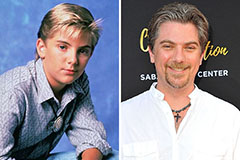The blending of artificial intelligence and non-fungible tokens (NFTs) is forging a revolutionary path in the music landscape. AI-generated music, once a concept, is rapidly becoming a reality, transforming traditional notions of musical creation. This burgeoning movement has profound implications for the future of NFTs, particularly in the realm of audio assets.
- Proponents of this fusion argue that AI-generated music unlocks a treasure trove of creative possibilities, enabling artists and developers to push into uncharted sonic domains. NFTs, in turn, provide a transparent platform for ownership of these unique audio assets.
- However, critics raise concerns about the potential of AI-generated music diluting the essential value of human creativity. The moral implications surrounding AI-driven composition remain a subject of ongoing controversy.
Looking ahead, the trajectory of AI-generated music NFTs remains a captivating puzzle. Whether it liberates the music industry or presents fundamental questions, this blending is set to shape the sonic landscape of tomorrow.
Decentralized Design: Leveraging AI and Blockchain for Creative Expression
The online landscape is continuously evolving, empowering a new era of creative expression. At the helm of this revolution stands decentralized design, a paradigm shift that employs the transformative power of AI and blockchain technology. This integration allows creators to explore their vision like never before, equalizing access to tools and platforms that were once limited.
- AI algorithms can now aid creators in generating novel concepts, accelerating the creative process.
- Blockchain technology provides a secure system for ownership of digital assets, empowering creators to monetize their output directly.
Thus, decentralized design cultivates a interactive ecosystem where artists can engage with each other and their viewership in unprecedented ways. This model has the potential to reshape the creative industries, encouraging a more diverse and thriving future for creative expression.
Sculpting Imagination: 3D Printing's Fusion of Virtual and Real Art
The realm in digital art is rapidly evolving, pushing the boundaries of what's possible. Now, a groundbreaking synergy is between the virtual and physical, with 3D printing emerging as a powerful tool to bring these creations into tangible existence. Artists are exploiting this technology to forge masterpieces that blur the lines of the digital and the real.
From intricate sculptures which defy gravity to detailed models that capture the essence with a concept, 3D printing empowers artists to materialize their visions in a whole new way. This convergence of art and technology is redefining the creative landscape, offering endless possibilities for innovation and exploration.
A Symphony of the Smart City: AI-Generated Sounds for Urban Living
Urban spaces are evolving into dynamic expressions of technology, and sound is becoming a key component. With the rise of artificial intelligence (AI), we're witnessing a revolutionary trend: AI composing soundscapes that augment our urban lives. Imagine strolling through a city where the soundscape shifts in real-time based on your context, creating a tailored auditory journey. AI algorithms can interpret data from various sources – such as traffic flow, weather patterns, and even pedestrian movement – to craft sounds that emulate the city's pulse.
- That AI-powered soundscapes can enhance our health, reducing stress and encouraging a sense of calm.
- Moreover, AI can utilize sounds to guide us through the city, providing audible cues for wayfinding and reducing congestion.
- In conclusion, the smart city symphony orchestrated by AI has the potential to transform our relationship with urban sound, creating a more harmonious and enriching living experience.
Photography Reimagined: AI Enhances Visual Storytelling in the Metaverse
The immersive digital space is rapidly evolving into a dynamic platform for creative expression. Photography, a long-established art form, undergoes a metamorphosis by the advent of artificial intelligence here (AI), opening up exciting new avenues for visual storytelling. AI-powered tools empower photographers to manipulate their images in unprecedented ways, blurring the lines between reality and fantasy.
From generating entirely new scenes to imposing fantastical elements, AI enables photographers to push the boundaries of their creativity. This convergence of photography and AI has profound implications for visual communication in the metaverse, offering users immersive and remarkable experiences.
- For example, AI algorithms can decode a photographer's vision and intelligently generate synesthetic elements to enrich the scene. This partnership between human and machine allows for the creation of awe-inspiring imagery that would be highly improbable to achieve through traditional methods.
- Moreover, AI can personalize photographic experiences for each user in the metaverse. By analyzing user preferences and interactions, AI can generate tailored imagery that connects to them on a deeper level.
As the metaverse develops, the role of AI in photography will only expand. We can anticipate a future where AI-powered tools become essential for photographers, enabling them to craft truly revolutionary visual stories that captivate audiences worldwide.
NFTs: Empowering a New Era of Artistic Expression
The digital/cyber/virtual art world is transforming at an unprecedented pace, fueled by the advent of non-fungible tokens (NFTs). These unique/one-of-a-kind/distinct digital assets allow artists to sell their creations in entirely innovative ways. NFTs are opening doors for up-and-coming artists, providing them with a outlet to share their talent and engage with devoted collectors worldwide.
- Blockchain technology
- Automated agreements
- Collectible digital assets
From stunning visual art to experimental soundtracks, NFTs are creating exciting possibilities for a diverse range of creative expressions. As this rapidly changing landscape continues to grow, one thing is certain: NFTs are reshaping the very nature of artistic creation and ownership.
 Jeremy Miller Then & Now!
Jeremy Miller Then & Now! Marques Houston Then & Now!
Marques Houston Then & Now! Barbi Benton Then & Now!
Barbi Benton Then & Now! Jeri Ryan Then & Now!
Jeri Ryan Then & Now! Terry Farrell Then & Now!
Terry Farrell Then & Now!